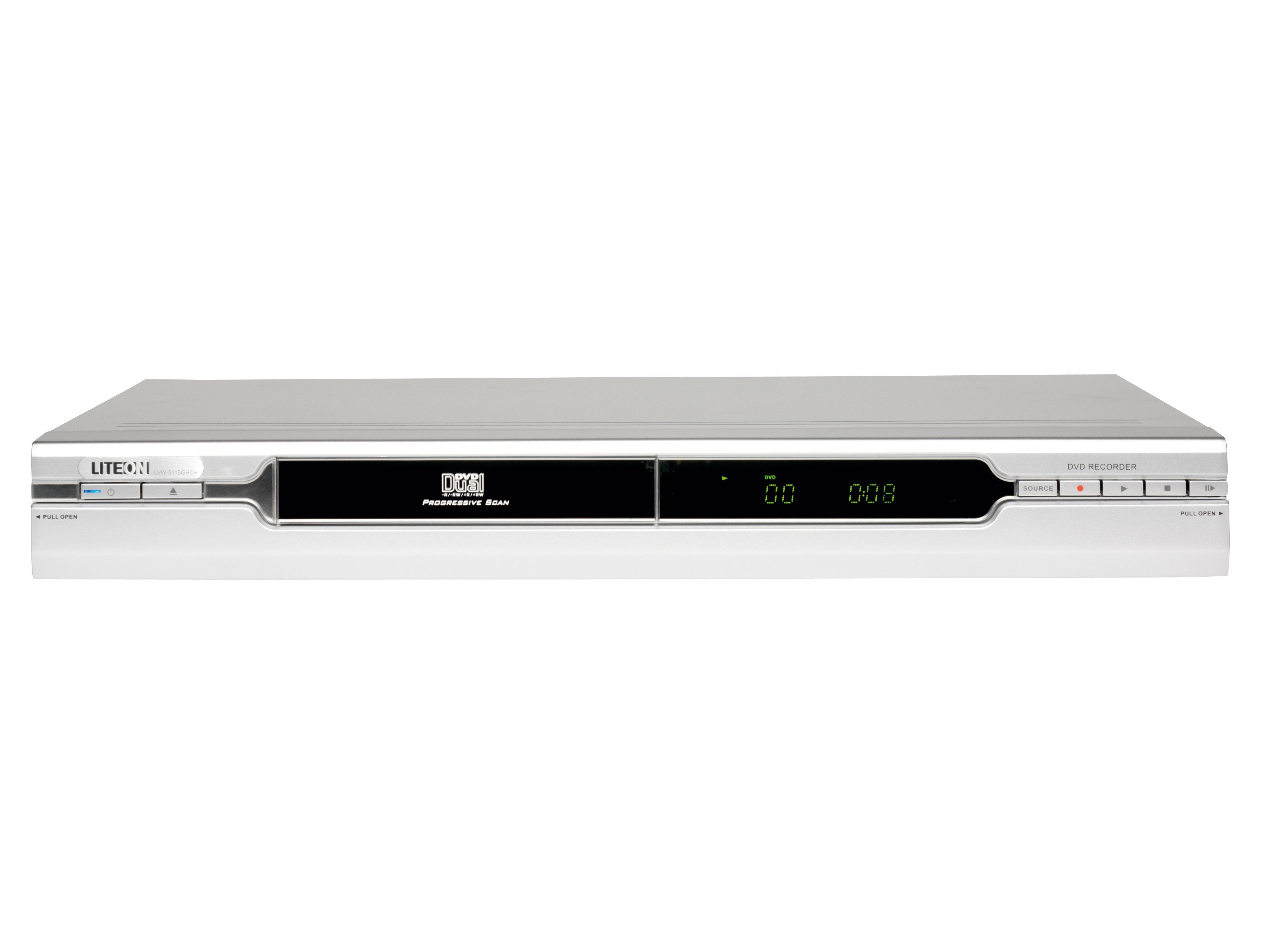TechRadar Verdict
Not enough picture quality or editing power to make this anything more than an also-ran
Pros
- +
Playback picture
Cons
- -
Recorded picture
Why you can trust TechRadar
Lite-On's budget recorder makes you want to get your eyes tested. We're not talking about a problem with the picture (not yet, anyway), or a ridiculously low price that makes you look twice (although £100 is very competitive). We're talking about the front panel display.
Hidden behind a frosted plastic screen, it looks like it's out of focus and it's a strange design element to include for starters.
Elsewhere the deck makes a better first impression. It's neatly put together and has good connectivity, including a front-panel DV input, rear component video outputs and a pair of Scart sockets. The input Scart cannot be set to accept an RGB signal, though, which is a blow, but we can't complain about the lack of an HDMI output at this price.
Recordings can be undertaken on DVD±R/RW discs, and you can choose from five recording modes, giving one, two, three, four or six hours of recording time. Editing functions are almost nonexistent and on par with the feature set available on any VHS VCR.
You can erase the contents of a disc or record over them (as with a VHS tape), but you can also give a disc a name and add chapter marks for easier navigation. Chapters can be marked manually, while you watch a recording in progress, or automatically, at pre-set intervals.
No RGB
Picture quality is where a DVD recorder can really score over a VCR, but without an RGB input (and with only an analogue tuner) you aren't getting the best the format can offer on this model.
There is a VideoPlus function for timed recordings, and you can programme up to 16 events at a time (although it is highly unlikely that you would want to squeeze 16 programmes on to one DVD).
Sign up for breaking news, reviews, opinion, top tech deals, and more.
Interestingly, a variation of this model (the 5115GDL) can record on to dual-layered R discs. The 5155GHC tested here can't. Other features include a zoom (up to 4x magnification) and slow motion (as slow as one-quarter normal speed), while multimedia compatibility includes JPEG and MP3 files, as well as DivX movie files (including VOD registration).
The 'Easy Guider' onscreen system continues to impress us with its simplicity, making this an easy model to get up and running. We were not impressed, sadly, by the picture quality on recordings. Fed a signal from a Sky digibox, the Lite-On loops through a disappointing image. On ordinary TV material it can look sharp and detailed, although faces on newsreaders looked bleached out.
Switch to a channel with onscreen text, however, and the limitations become clear with contrast so harsh, it creates fizzy dot crawl around the edges of letters. This is captured on DVD recordings. The one- and two-hour settings do a good job of retaining the quality of the original signal, but that's a mixed blessing here.
With programming without an onscreen logo you can enjoy the picture, but introduce any sort of onscreen graphical element and you'll see that fizz intrude. The lower record settings introduce more digital artefacts to keep the fizzing company, and the six-hour setting is very poor.
There is a noticeable strobe effect, where the picture judders badly. It looks much worse than an LP VHS recording (the six-hour mode actually records in MPEG1 format, the old Video CD standard). The really sad thing is that this deck does extremely well as a playback device. Pre-recorded DVDs look sumptuous when fed out through the RGB Scart output.
There is plenty of depth, lovely colour rendition and very pleasing levels of detail. It's not enough to redeem things, of course.
A DVD recorder that does not capture a high-quality image is missing the point, and when you consider that this deck also ignores the useful editing options the format can and should offer, it's clear that this deck will not be making it on to our wish list. David Smith
Tech.co.uk was the former name of TechRadar.com. Its staff were at the forefront of the digital publishing revolution, and spearheaded the move to bring consumer technology journalism to its natural home – online. Many of the current TechRadar staff started life a Tech.co.uk staff writer, covering everything from the emerging smartphone market to the evolving market of personal computers. Think of it as the building blocks of the TechRadar you love today.
